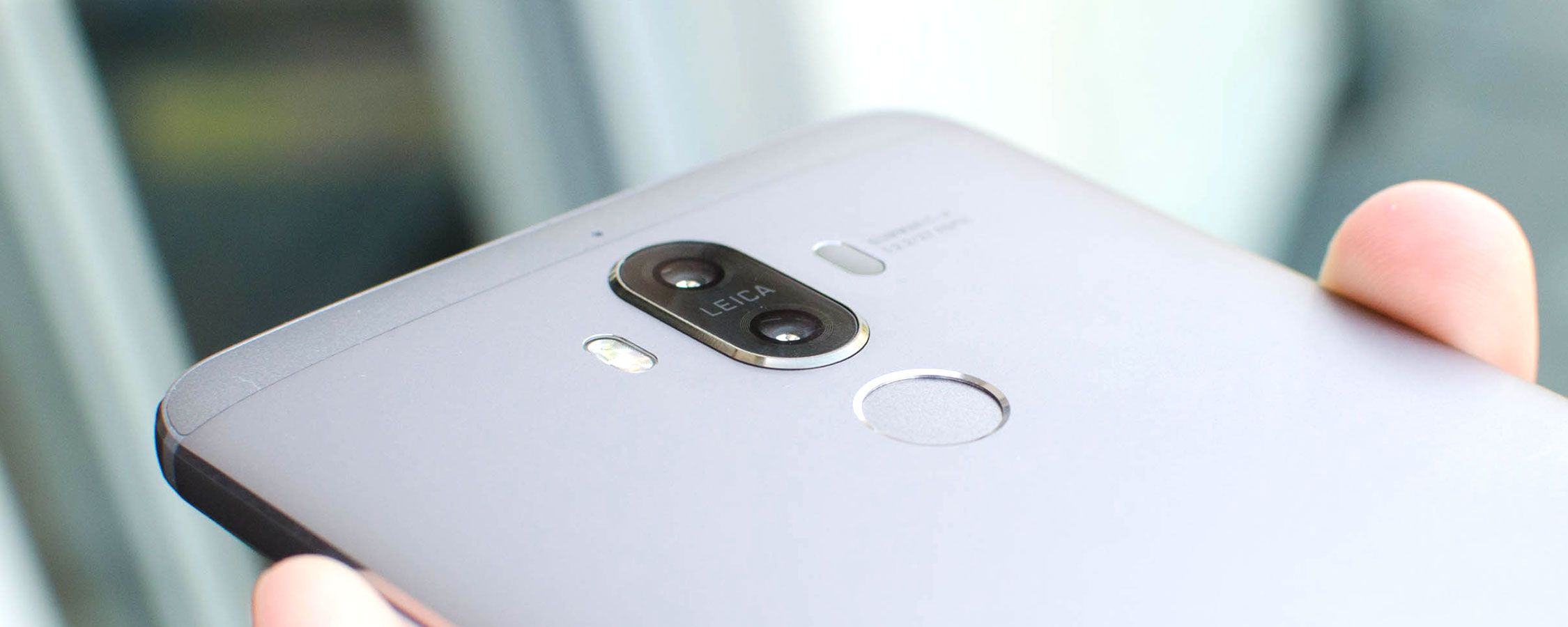Hardware Overview & System Performance
The Huawei Mate 9 features a HiSilicon Kirin 960 SoC, which is an upgrade on the Kirin 955 we saw in the Huawei P9. Many aspects of the Kirin 960's design are the same as in the Kirin 955, such as the octa-core big.LITTLE CPU design and the use of a 16nm manufacturing process. We are, however, seeing upgrades to both the CPU cores and the GPU to improve performance.
On the CPU side, we're looking at a quad-core ARM Cortex-A73 cluster for high performance tasks, and a quad-core Cortex-A53 cluster for energy efficiency. The A73 cores are new to the Kirin 960, replacing the A72 cores, and are clocked slightly lower at 2.36 GHz rather than 2.5 GHz. However, the improvements to the core design of the A73 leads to higher IPC, and therefore the A73 cores outperform the A72s despite the lower clock speed. The A53 cores are clocked at up to 1.84 GHz.
The GPU used here is an ARM Mali-G71 MP8 clocked up to 1037 MHz. This is a massive upgrade over the Mali-T880 MP4 used in the Kirin 955, and should (on paper) provide roughly 2.3x the performance.
Specific to the Mate 9 is 4GB of RAM and 64GB of internal storage. There's Wi-Fi 802.11a/b/g/n/ac, Bluetooth 4.2, NFC and LTE Category 12 with 3xCA. There are two Mate 9 models in the wild, so make sure you buy one that supports your local networks, although each model supports more than 15 LTE bands and both should be suitable for use in Europe, Asia and North America for the most part.

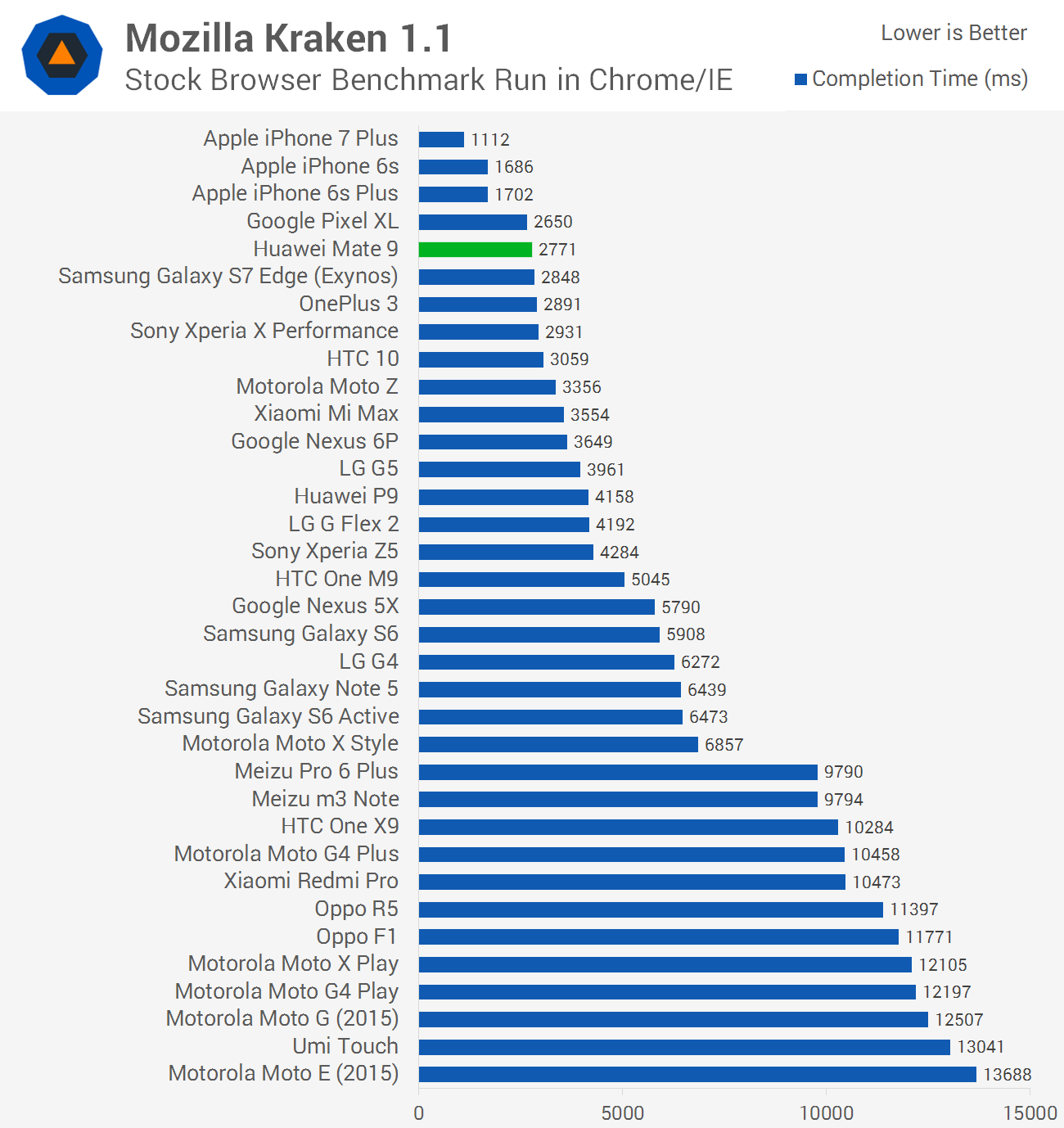
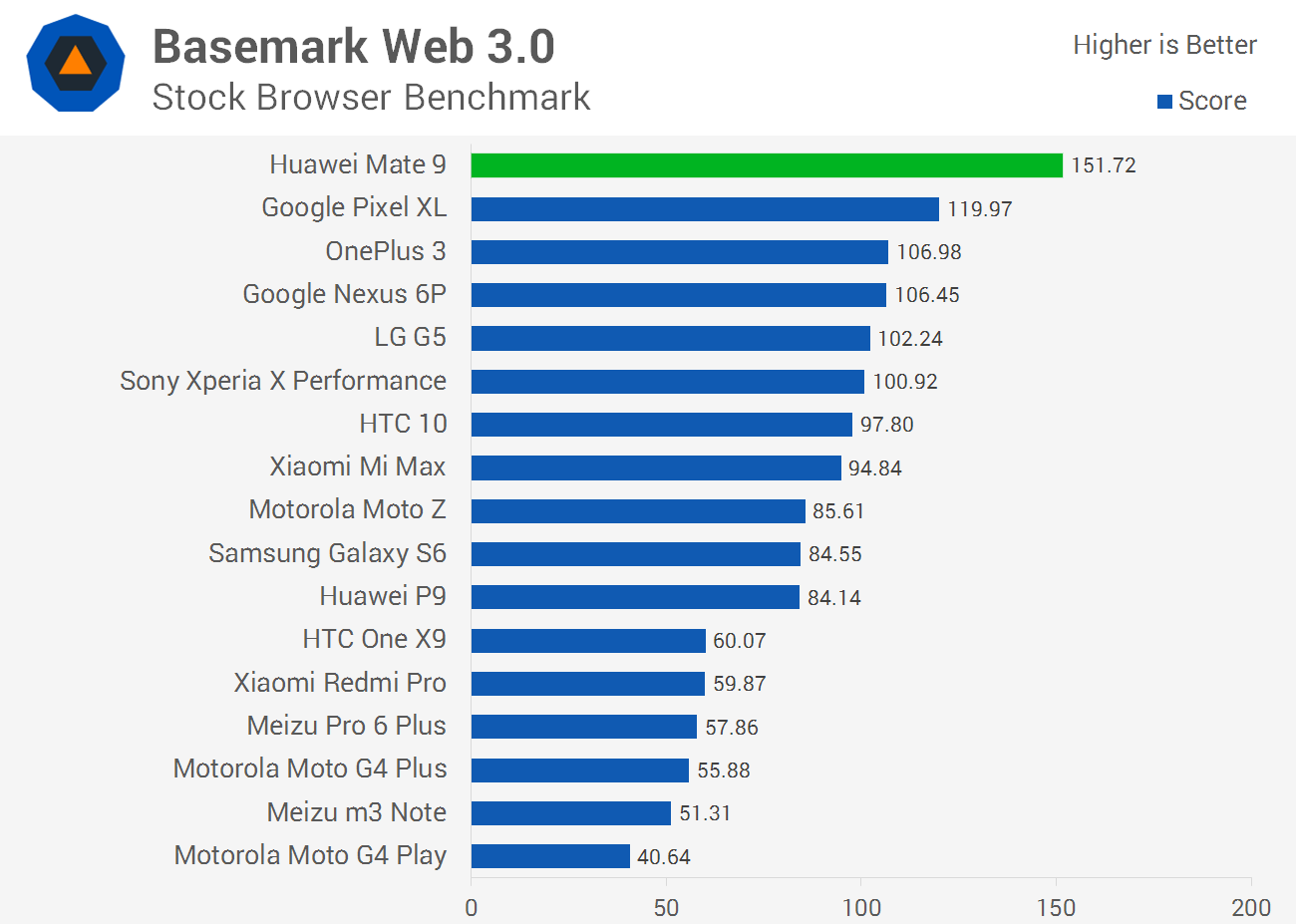
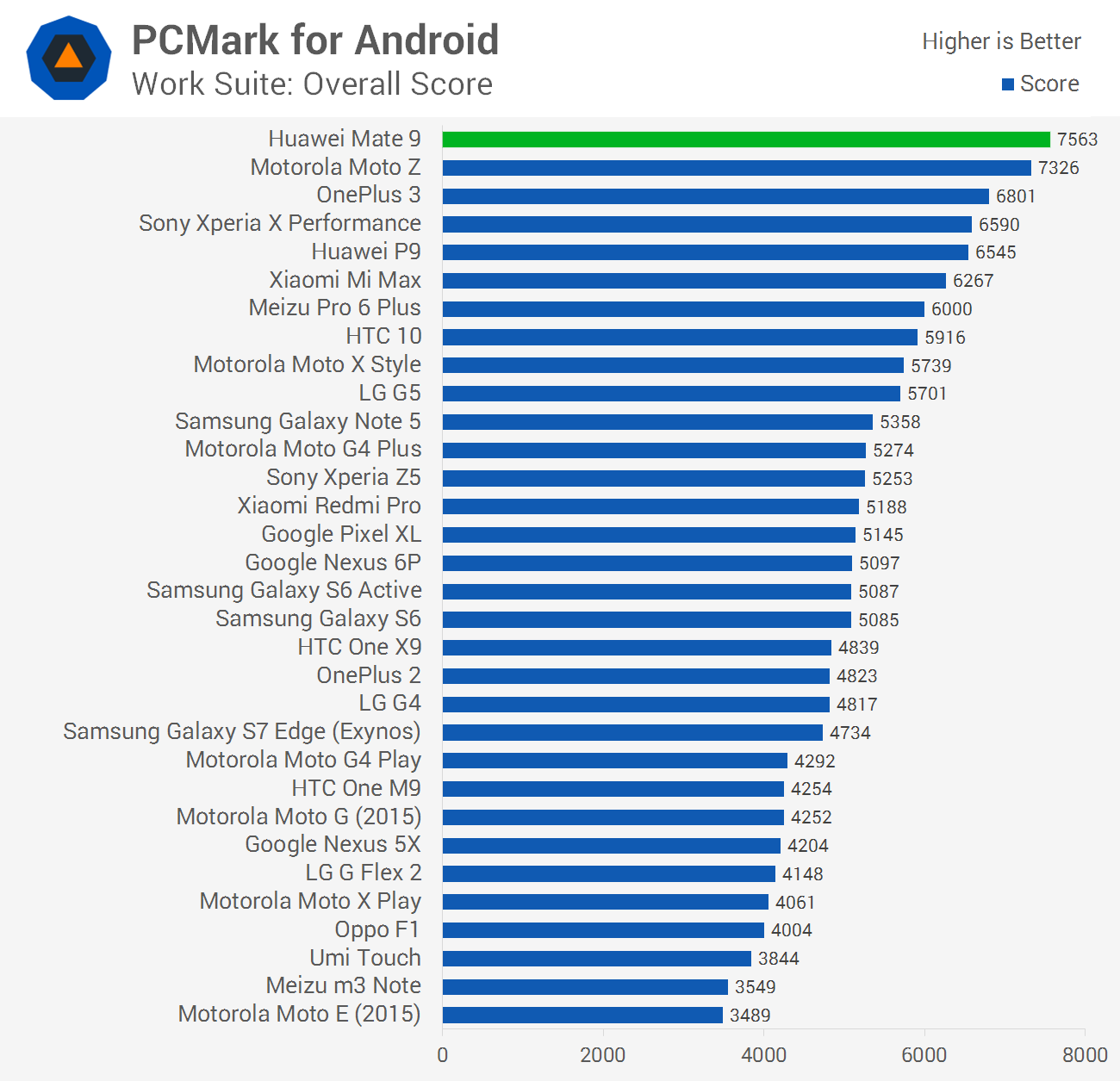
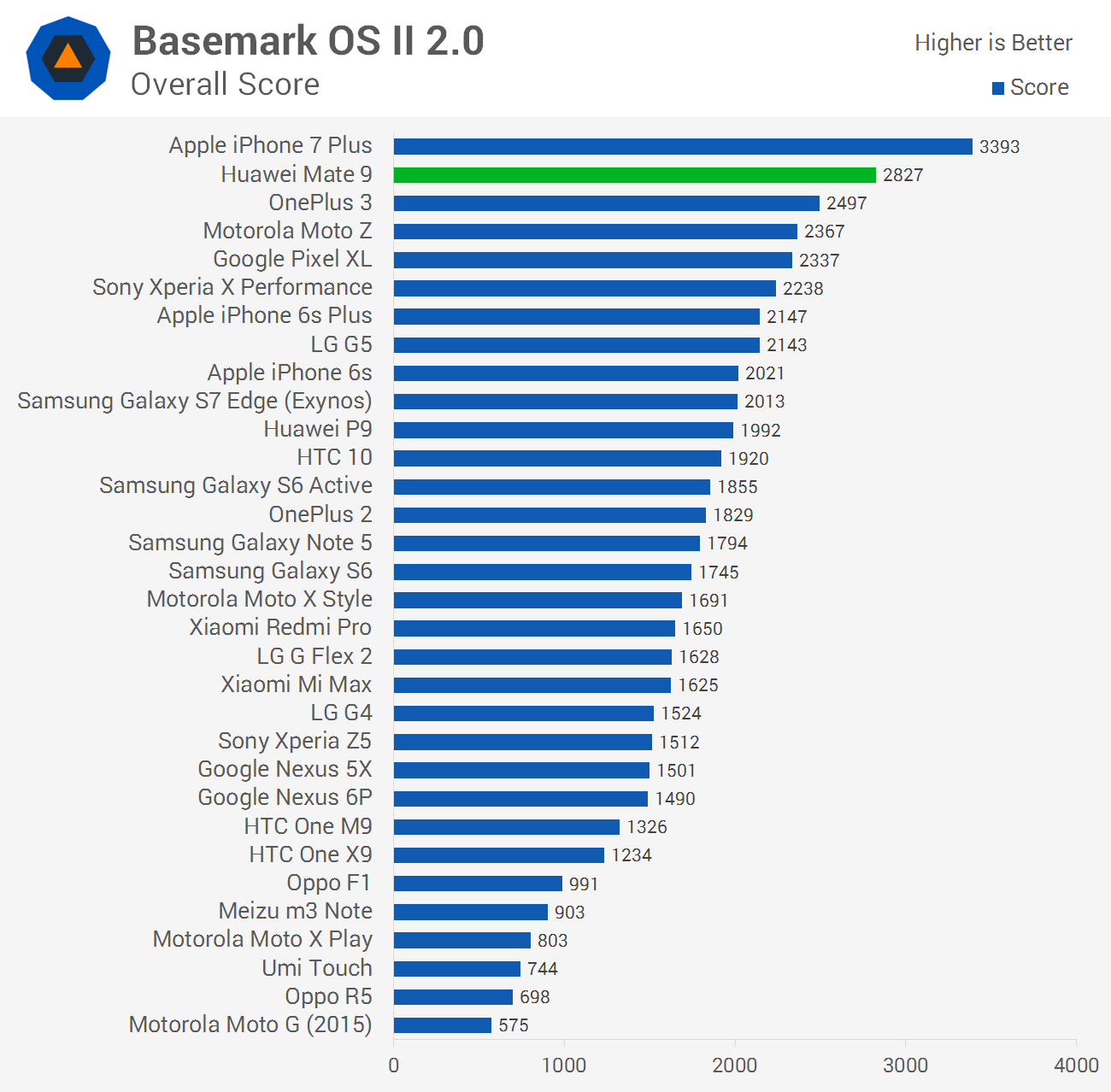
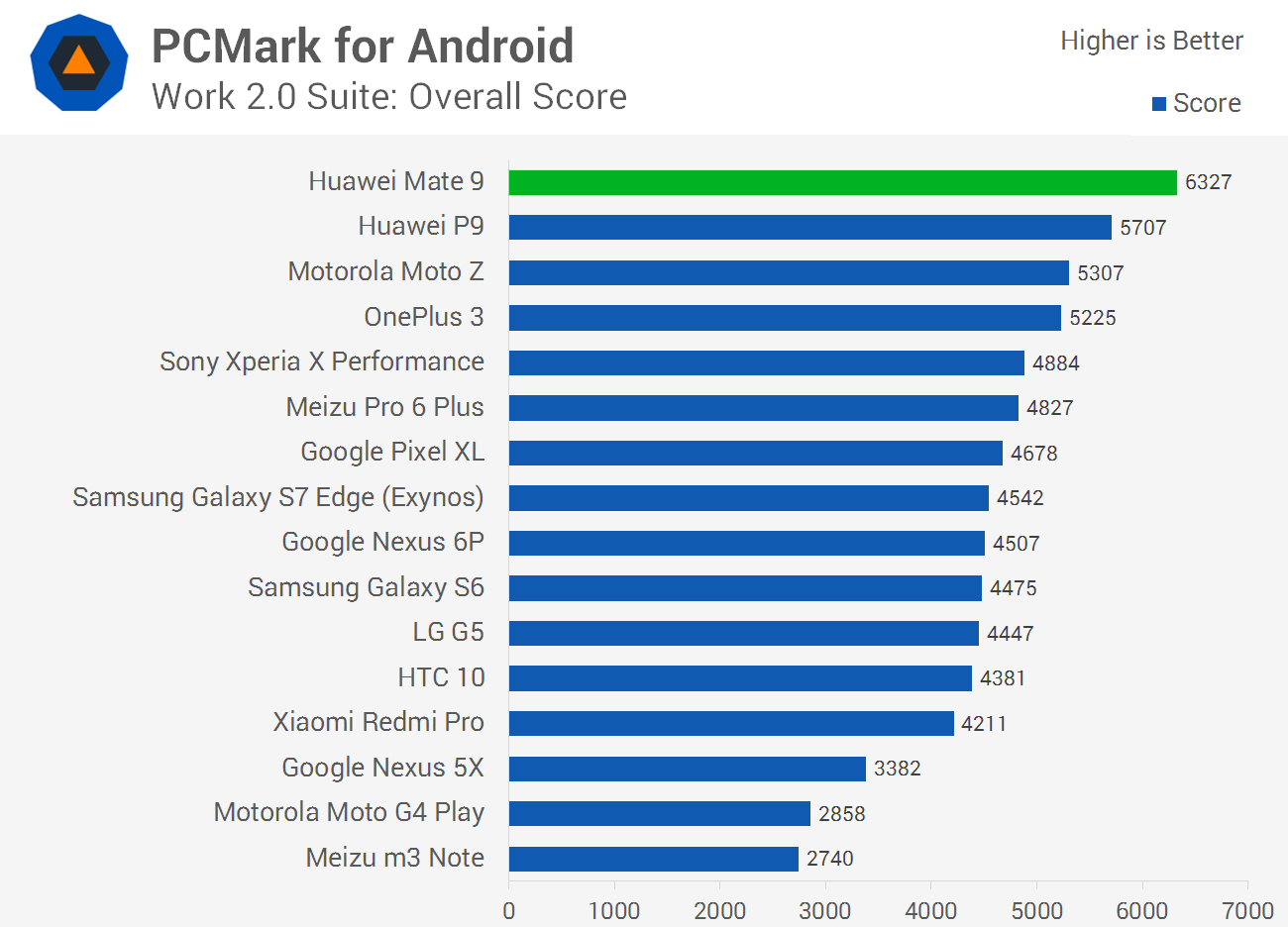
Performance from the Mate 9 is excellent in general, with fast app loading and great in-app performance. It's clear that the Kirin 960 is a top-end SoC that provides a fast CPU and GPU to apps that need it.
Relative to the last-generation Kirin 955, the CPU in the Kirin 960 is 8 percent faster; a good result considering the lower clock speed. In general system benchmarks like PCMark, we see gains of 10 to 15 percent.
Compared to an SoC used in many current-generation phones, the Qualcomm Snapdragon 821, the Kirin 960 is a good 30 percent faster in CPU-limited workloads. Of course the Snapdragon 821 will soon be superseded by the Snapdragon 835, but there's a good chance that the Kirin 960 will hold its own against the S835 in CPU-intensive tasks. This is what you'd want for an SoC launching ahead of Qualcomm's best: clearly superior CPU performance.
